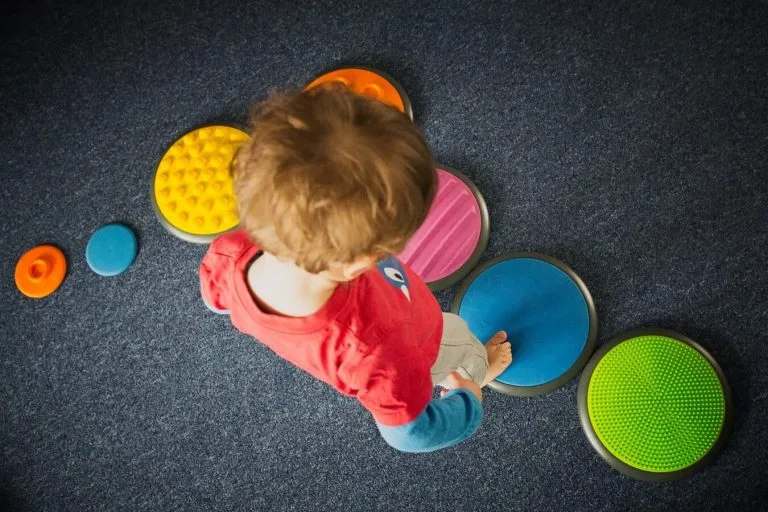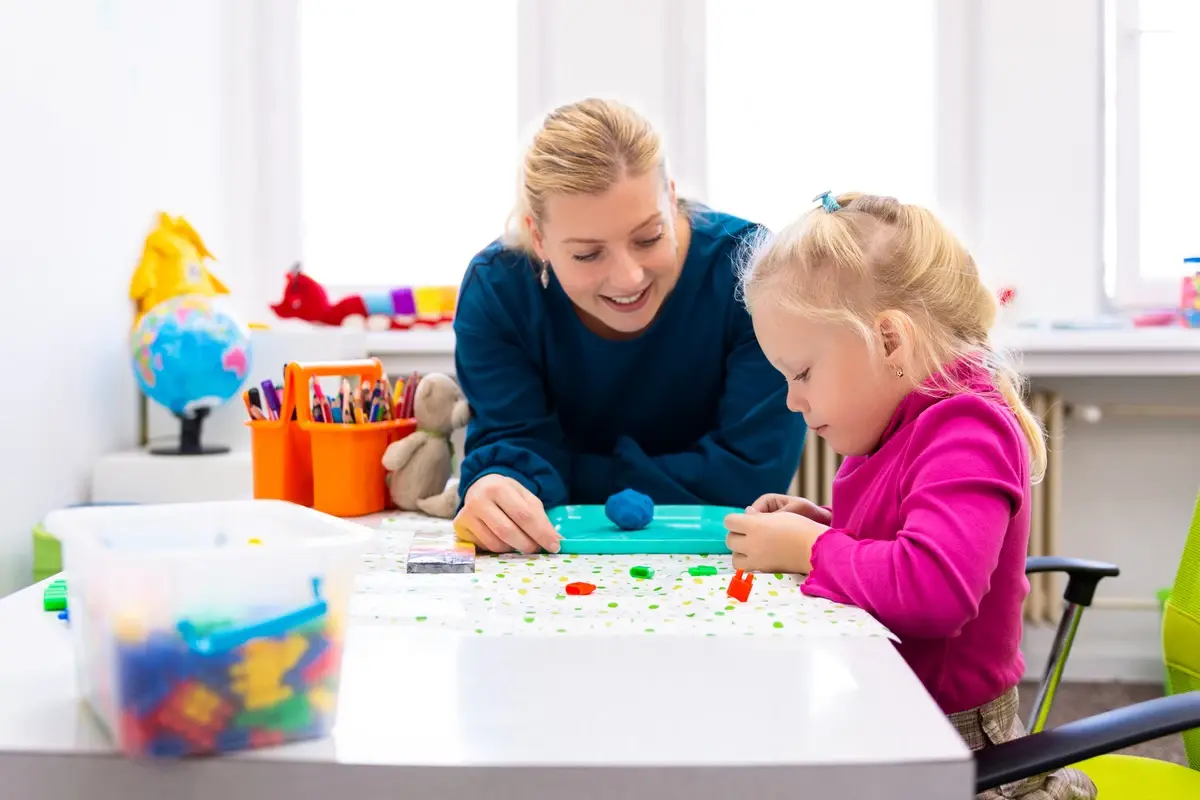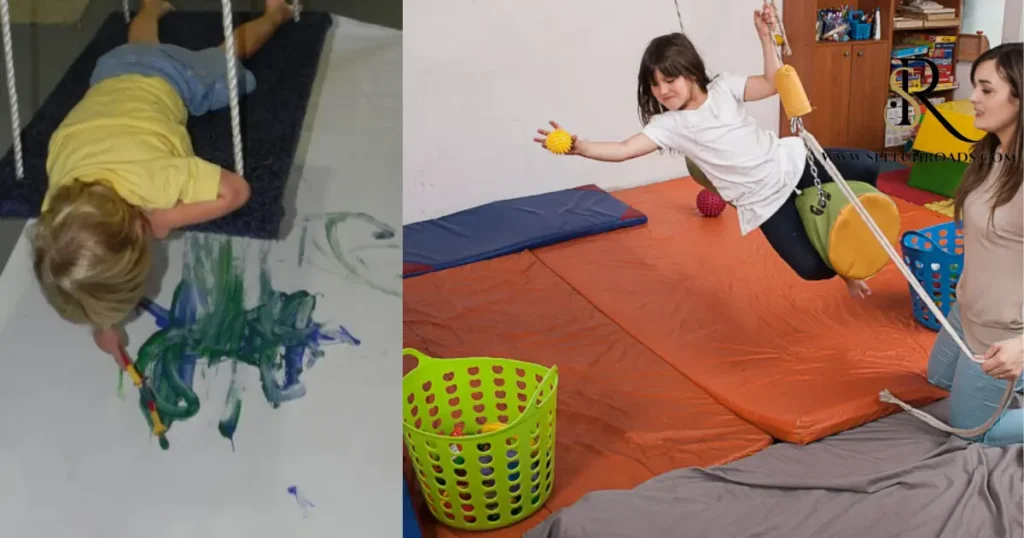Sensory Integration Therapy at Home
Understanding Sensory Integration and Its Role in Child Development
Sensory integration is a fundamental system that allows our brains to interpret and reply to the various sensory inputs.
We acquire from our surroundings and our own bodies.
This crucial neurological characteristic performs a crucial role in an infant’s normal improvement.
Influencing their capability to research, interact with the arena around them.
Enhance your child’s sensory development with Sensory Integration Therapy at home using simple and effective techniques designed for everyday routines.
For children sensory integration allows them to system and make feel of the plentiful sensory data they come across every day.
This consists of touch, sight, sound, scent, flavor, movement and the position of their frame in the area.
When this integration works easily children can correctly clear out, arrange and respond to sensory stimuli.
Permitting them to take part in daily activities, awareness of duties and shape meaningful connections with others.
A few youngsters may enjoy sensory processing difficulties.
Their brain has trouble as it should be registering, decoding and responding to sensory records.
This could lead to a diffusion of demanding situations inclusive of:
- Oversensitivity or under sensitivity to certain sensations
- Difficulty with coordination and balance
- Behavioral issues like meltdowns or avoidance of certain environments
- Challenges with social interactions and emotional regulation
- Difficulties with learning, concentration and academic performance
Sensory integration therapy is a specialized approach that facilitates kids with those sensory processing demanding situations.
Broaden the necessary neurological pathways and competencies to better system and reply to sensory statistics.
Through addressing the foundation reasons of those difficulties sensory integration therapy could have a profound impact on a baby’s overall development.
Permitting them to reach their complete capability.
Recognizing the Signs Of Sensory Integration Therapy At Home: Identifying Sensory Needs in Your Child

As a parent, being capable of recognizing the signs of sensory processing problems to your baby is the first step toward presenting the support and intervention they need. Here are some commonplace signs that your toddler may be experiencing sensory integration challenges:
Sensory Seeking Behaviors:
- Craving intense sensory experiences such as spinning, jumping or crashing into objects
- Touching everything and everyone often in an inappropriate or disruptive manner
- Seeking out strong smells, tastes or textures even if they are unpleasant to others
Sensory Avoidance Behaviors:
- Extreme sensitivity to certain textures, sounds, or lights leading to distress or meltdowns
- Discomfort with certain clothing materials or tags
- Aversion to specific foods with certain tastes or textures
Motor and Coordination Challenges:
- Difficulty with balance, coordination and gross motor skills
- Clumsiness or a tendency to bump into objects
- Poor fine motor skills such as struggles with handwriting or using utensils
Emotional and Behavioral Difficulties:
- Frequent mood swings, irritability or difficulty with emotional regulation
- Challenges with social interaction and communication
- Difficulty following instructions or completing tasks
In case you observe a pattern of those behaviors in your infant. It’s crucial to seek the leadership of a qualified healthcare professional. Consisting of an occupational therapist or a pediatrician who can offer a comprehensive evaluation and increase a tailor made intervention plan.
Creating a Friendly Environment For Sensory Integration Therapy At Home

Establishing a sensory pleasant surroundings at home may have a widespread effect on your child’s proper being and development. By growing a space that caters to their precise sensory wishes you may assist them experience more calm, targeted and engaged. Here are some key elements to take into account while putting in a sensory friendly therapy at home:
Lighting:
- Utilize natural lighting as much as possible and avoid harsh fluorescent overhead lights
- Incorporate dimmable lamps or string lights to create a soothing, calming ambiance
- Consider using soft color changing lights or lamps with a range of color temperatures
Textures and Surfaces:
- Incorporate a variety of tactile elements such as plush pillows, weighted blankets and textured rugs
- Provide a range of sensory tools like fidget toys, stress balls and sensory bottles
- Ensure that furniture and surfaces have a comfortable inviting feel
Sound Levels:
- Minimize background noise by using sound absorbing materials like curtains or rugs
- Offer noise canceling headphones or earplugs for when your child needs a quiet calming space
- Incorporate soothing sounds such as nature soundtracks or calming music
Zoning and Organization:
- Designate specific areas for different activities such as a quiet reading nook or a movement friendly play space
- Use visual cues such as labels or color coding to help your child navigate the environment
- Maintain a clutter free organized space to minimize sensory overwhelm
By developing a harmonious sensory pleasant environment at home you can offer your infant a safe, nurturing space to discover, study and thrive. Bear in mind every toddler’s sensory wishes are precise. So be organized to test and make changes till you find the precise stability to your family.
Sensory Integration Therapy At Home Activities and Techniques

Incorporating sensory integration activities into your toddler’s day by day recurring can be a powerful manner to guide their improvement. Also cope with any sensory processing challenges they will be facing. Here are a few examples of attractive, age appropriate sensory integration activities you may attempt at home:
Tactile Exploration:
- Create a sensory bin filled with a variety of textures such as rice, beans or shredded paper
- Encourage your child to touch, feel and manipulate different materials with their hands
- Incorporate sensory rich crafts like finger painting or play dough sculpting
Vestibular and Proprioceptive Activities:
- Set up a safe indoor swing or trampoline for jumping and bouncing
- Engage your child in activities that promote balance and coordination like obstacle courses or yoga poses
- Incorporate heavy work tasks such as pushing, pulling or carrying weighted objects
Auditory Stimulation:
- Introduce musical instruments for your child to experiment with like drums or maracas
- Play sound making games where your child identifies the source of different sounds
- Create a calming sound environment with nature soundtracks or soothing music
Visual Stimulation:
- Hang colorful visually stimulating artwork or posters on the walls
- Provide sensory toys with flashing lights or kaleidoscopic effects
- Encourage your child to create their own art using a variety of materials and media
Remember it is important to take a look at your baby’s reactions and options while introducing these activities. A few kids may also reply higher to particular sensory studies so be prepared to adjust and discover the proper balance to your baby’s man or woman needs.
Collaborating with Professionals for Optimal Results in Sensory Integration Therapy At Home

Even implementing sensory integration therapy at home can be fairly beneficial. Collaborating with healthcare experts consisting of occupational therapists. It can considerably beautify the effectiveness of your efforts. Occupational therapists concentrate on evaluating and addressing sensory processing demanding situations and they are able to offer invaluable steering and aid.
While running with an occupational therapist you could expect the following:
Comprehensive Evaluation: The therapist will conduct a thorough assessment of your child’s sensory processing abilities, motor skills and overall developmental needs. This evaluation can help identify the specific areas that require intervention.
Individualized Treatment Plan: Based on the evaluation the therapist will develop a personalized treatment plan that targets your child’s unique sensory integration needs. This plan may include a combination of in office therapy sessions and home based activities.
Customized Activity Recommendations: The occupational therapist will provide you with a range of sensory integration activities and techniques that you can incorporate into your child’s daily routine at home. They will teach you how to properly implement these activities and monitor your child’s progress.
Ongoing Communication and Support: Throughout the intervention process the occupational therapist will regularly communicate with you. Providing updates on your child’s progress and adjusting the treatment plan as needed. They can also offer guidance on how to effectively collaborate with your child’s teachers or other healthcare providers.
By means of operating intently with an occupational therapist you can ensure that your home based sensory integration efforts are aligned with expert expertise and tailor made in your baby’s unique desires. This collaborative technique can cause extra good sized and sustainable upgrades to your baby’s sensory processing competencies. In the long run improving their usual improvement and well being.
FAQ’s
How can I treat sensory problems at home?
Cognitive practice, salt therapy, homeopathy, skullcap, increasing melatonin levels and dietary alterations.
What are examples of sensory integration therapy?
Deep pressure, brushing, weighted vests and swinging.
How to calm a child with SPD?
Set Up an Action Room.
How to stop sensory issues?
Sensory integration therapy usually conducted by an occupational or physical therapist.
Conclusion
Sensory integration therapy at home may be an effective device in helping your child’s growth and unlocking their full ability.
By informing the significance of sensory integration, recognizing the signs of sensory processing challenges and creating a sensory friendly environment.
You can offer your infant with the assets and help they need to thrive.
Don’t forget each toddler’s sensory desires are unique.
So be an affected person chronic and adaptable in your approach. Collaborate with healthcare experts.
Consisting of occupational therapists to make certain your home based total efforts are nicely informed and powerful.
With determination and a willingness to discover you can empower your infant to conquer sensory processing problems and attain new heights in their development.







